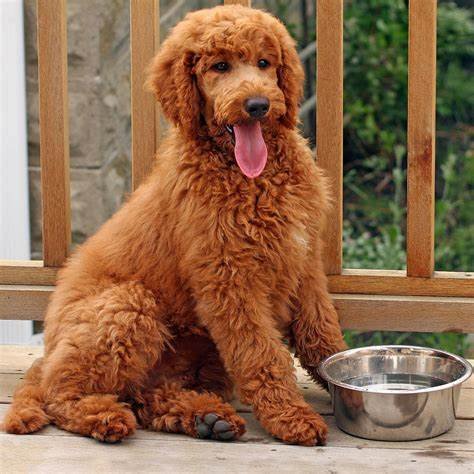Top 10 Low-Shedding Dog Breeds and Their Grooming Requirements
If you love dogs but dread the idea of constantly cleaning up fur, low-shedding dog breeds might be perfect for you. Not only do these breeds shed minimally, but many are also considered hypoallergenic dog breeds, making them ideal for allergy sufferers. Let's explore the top 10 low-shedding dog breeds and how to care for their grooming needs. Whether you're looking for the best pet care in Dubai or considering the best dog boarding in Dubai for your furry friend, this guide is tailored for pet lovers like you.
Why Choose Low-Shedding Dogs?
Low-shedding dogs are not only easier to manage in terms of grooming, but they’re also ideal for people with allergies. They’re often considered hypoallergenic dog breeds, making them suitable for families with sensitivities. Additionally, these breeds are perfect for busy pet lovers seeking low-maintenance dogs.
Whether you're adopting a playful Bichon Frise or a regal Poodle, these breeds offer companionship without the hassle of constant fur cleanup.
1. Poodle
Poodles come in three sizes: Standard, Miniature, and Toy. Known for their curly, dense coats, Poodles shed minimally, trapping loose hair within their curls.
Grooming Needs: Regular brushing (2-3 times a week) and professional grooming every 4-6 weeks are essential. Their coat requires trimming to prevent matting and maintain their iconic appearance.
Why They're Great: Poodles are intelligent and hypoallergenic dog breeds, making them ideal for families with allergies.
2. Bichon Frise
The Bichon Frise is a cheerful, fluffy dog with a soft, curly coat that barely sheds.
Grooming Needs: Daily brushing and monthly professional grooming are necessary to keep their coat looking its best. Regular ear cleaning and nail trimming are also recommended.
Why They're Great: These friendly dogs are perfect companions for pet lovers seeking low-maintenance dogs.
3. Maltese
Maltese dogs are small, playful, and boast long, silky white coats that shed very little.
Grooming Needs: Brush their coat daily to prevent tangles, and bathe them every 2-3 weeks. Regular eye cleaning helps reduce tear stains.
Why They're Great: They’re excellent for apartment living and are among the best dogs for allergies.
4. Shih Tzu
Shih Tzus are charming and affectionate dogs with luxurious, flowing coats.
Grooming Needs: Daily brushing is crucial to prevent tangling, and professional grooming every 4-6 weeks keeps their coat manageable.
Why They're Great: Their minimal shedding and friendly nature make them a favorite among families.
5. Portuguese Water Dog
As the name suggests, these dogs love water and have a dense, curly coat similar to a Poodle.
Grooming Needs: Brush their coat several times a week and schedule professional grooming every 6-8 weeks. Regular ear checks are essential since they’re prone to ear infections.
Why They're Great: They’re hypoallergenic dog breeds and thrive in active households.
6. Yorkshire Terrier
Yorkies have fine, silky hair that resembles human hair, shedding very minimally.
Grooming Needs: Daily brushing and monthly trims are recommended. Regular dental care is also essential for their overall health.
Why They're Great: Their small size and low-shedding coat make them perfect for pet boarding and travel.
7. Havanese
Havanese dogs are friendly, playful, and sport a silky, low-shedding coat.
Grooming Needs: Brush their coat 3-4 times a week and schedule grooming every 6-8 weeks. Regular eye and ear cleaning is important.
Why They're Great: Their adaptable nature makes them suitable for families and individuals alike.
8. Cairn Terrier
Cairn Terriers are energetic, small dogs with a weather-resistant double coat that sheds minimally.
Grooming Needs: Weekly brushing and occasional hand-stripping (removing dead hair by hand) keep their coat healthy.
Why They're Great: They’re low-maintenance dogs with big personalities.
9. Schnauzer (Miniature, Standard, Giant)
Schnauzers have a wiry, low-shedding coat that’s easy to manage.
Grooming Needs: Brush their coat twice a week and schedule professional grooming every 6-8 weeks. Regular beard cleaning helps maintain hygiene.
Why They're Great: They’re versatile dogs that thrive in both city and rural settings.
10. Basenji
Basenjis are known as the "barkless dog" and have a short, fine coat that sheds very little.
Grooming Needs: Weekly brushing is sufficient to remove loose hair. These dogs are naturally clean and rarely need baths.
Why They're Great: Their quiet nature and low-maintenance coat make them an excellent choice for busy pet lovers.
Grooming Tips for Low-Shedding Dog Breeds
Proper grooming keeps your dog’s coat healthy and ensures their comfort. Here are some general tips:
Invest in Quality Tools: Use appropriate brushes and combs for your dog’s coat type.
Maintain a Routine: Regular grooming prevents tangles and mats.
Check for Skin Issues: Look for signs of irritation, dryness, or parasites during grooming sessions.
Visit Professional Groomers: Expert groomers can handle trims, nail clipping, and other detailed tasks.
Finding the Best Pet Care in Dubai
For pet owners in Dubai, ensuring your furry friend receives the best care is essential. Whether you need pet boarding or the best dog boarding in Dubai, there are plenty of options available. Many facilities cater specifically to low-shedding dog breeds, offering specialized grooming services tailored to their unique needs.
When choosing a boarding facility, look for these features:
Experienced staff familiar with hypoallergenic dog breeds.
Clean and safe environments.
Grooming packages to keep your dog’s coat in top shape.
Final Thoughts
Choosing the right dog breed involves considering your lifestyle, grooming preferences, and allergy concerns. Low-shedding dog breeds provide a wonderful balance of beauty, companionship, and practicality. If you're in Dubai, finding the best pet care or pet boarding facilities ensures your dog stays happy and healthy, even when you're away.







